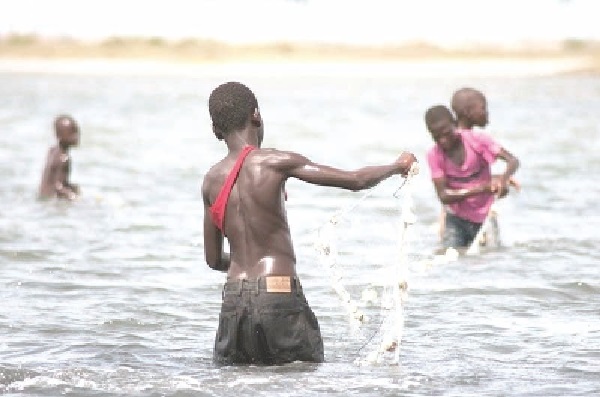
Child labour figures rise — GSS report
MORE than 1.1 million children aged between five and seven were involved in different forms of work in the fourth quarter of 2023.
This represents one in every 10 (10.3%) children in this age range, according to the 2023 Annual Household Income and Expenditure Survey.
Released by the Ghana Statistical Service (GSS) in Accra yesterday to mark the World Day Against Child Labour, it said among the children, about 893,000 were involved in employment work, which is mostly paid work.
Observed annually on June 12, the day aims to raise awareness and prompt action to combat child labour globally.
This year's observation is on the theme: "Let’s Act on Our Commitments: End Child Labour," and calls for intensified efforts to fulfil pledges to eliminate child labour and protect children’s rights.
It comes at a time when there seems to be some serious challenges with the implementation of the Free Compulsory Universal Basic Education (FCUBE) policy which has been enshrined in the 1992 Constitution.
Breakdown
According to the report, 56 per cent of the children who are involved in different forms of work are males, while almost half a million of these working children are not attending school.
This comprises 68,500 who have never attended school and 389,943 who attended school in the past.
Urban areas account for over a quarter, approximately 309,199, representing 28 per cent of working children, while rural areas have a significantly higher proportion, with almost three-quarters, that is 795,175.
This represents 72 per cent of the figure.
Regional picture
From a regional perspective, the Ashanti Region accounts for the highest percentage of children working with 13.6 per cent of the total number, followed by Bono East with 12.1 per cent, and then Northern pegged at 11.8 per cent.
The Ahafo Region constitutes 0.8 per cent, while Greater Accra has 1.6 per cent and Western North, 1.8 per cent; they have the lowest percentages of working children.
Giving further insights, the report showed a breakdown of the forms of work which revealed that 35.4 per cent of children worked as family help, followed by farm work (31.2%), unpaid trainees (11.7%), and own use production (7.3%).
Also, 6.2 per cent of children were engaged in non-farm work, 5.3 per cent in wage work and 2.9 per cent involved in domestic, non-productive agriculture, voluntary work or apprentice work.
Elementary occupations, the report said, pre-dominated the occupational landscape for working children, representing 60.4 per cent.
This was followed by craft and trade-related work (19.8%) and then skilled agricultural, forestry, and fish-related work (17.7%).
Service and sales workers constituted 1.7 per cent while plant and machine operators, and assemblers was 0.2 per cent with manager at 0.1 per cent accounting for the least working children.
The services sector employs nine in 10 (91.7%) of the working children, while agriculture and industry engage 4.8 per cent and 3.6 per cent, respectively.
Eight in 10 (80.4%) of working children were involved in contributing to family work, both in agricultural and non-agricultural sectors.
The second most common employment status for children is unpaid apprenticeship, which constitutes 11.7 per cent.
Additionally, the report revealed that 1.9 per cent of working children are self-employed, 0.5 per cent are paid employees and 4.9 per cent of working children fall under other employment categories.
Views
Analysts believe that to curb the practice, the government needs to take the implementation of the FCUBE more seriously to change the narrative.
They said the same attention given to the implementation of the Free Senior High School (FSHS) policy should be accorded the FCUBE to prevent the abuse of children who found themselves in the work place.